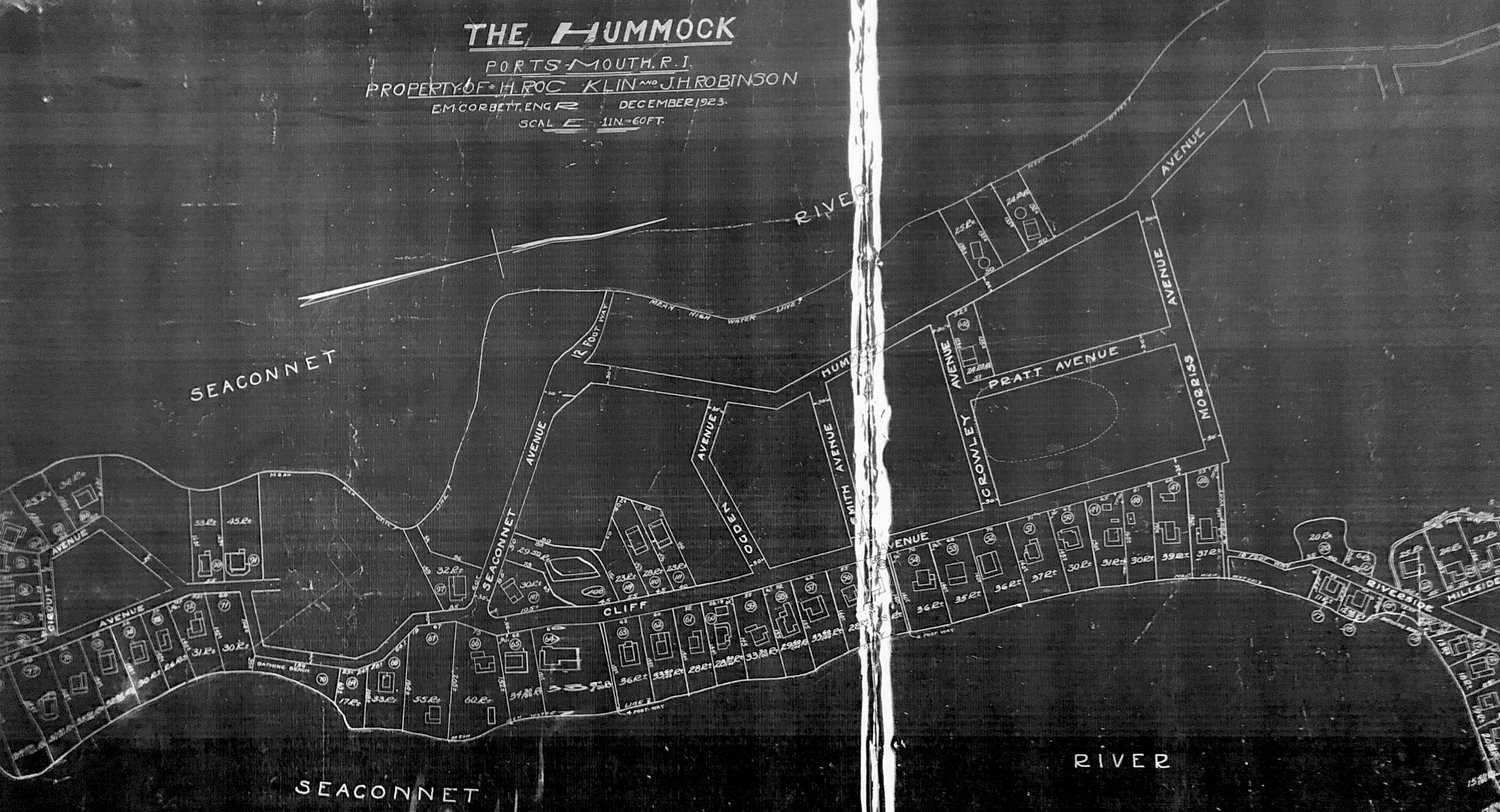- THURSDAY, MAY 16, 2024
Hummocks was founded for people working on the railroad
Jim Garman recounts history of Portsmouth neighborhood
When you ride or walk along Cliff Avenue these days, you’ll see a good number of large year-round houses outfitted with porches and decks on the east side to take advantage of the Sakonnet River views.
This item is available in full to subscribers.
Please log in to continue |
Register to post eventsIf you'd like to post an event to our calendar, you can create a free account by clicking here. Note that free accounts do not have access to our subscriber-only content. |
Day pass subscribers
Are you a day pass subscriber who needs to log in? Click here to continue.
Hummocks was founded for people working on the railroad
Jim Garman recounts history of Portsmouth neighborhood

Editor’s note: Town Historian Jim Garman lectured on the history of North Portsmouth on Jan. 25 at the CFP Arts, Wellness, and Community Center in Common Fence Point. Last week, we focused on Common Fence Point, and this week it’s the Hummocks neighborhood. Garman’s thoughts on Island Park will be published next week.
PORTSMOUTH — When you ride or walk along Cliff Avenue these days, you’ll see a good number of large year-round houses outfitted with porches and decks on the east side to take advantage of the Sakonnet River views.
It’s a far cry from what the Hummocks neighborhood — perched along the town’s northeastern shore between the Sakonnet River Bridge and the Escape Bridge toward Island Park — looked like many years ago, when most of the homes were mere summer cottages with no insulation.
In fact, the Hummocks was established by the New-Haven-Hartford Railroad in the 1890s as a cottage colony for railroad workers, Town Historian Jim Garman told about 100 people during his Jan. 25 lecture on the history of North Portsmouth.
The neighborhood also became a popular summer get-away for families from Fall River, Taunton and elsewhere. A neighborhood association started in 1923 and a now-defunct community hall on the south end of Cliff Avenue was a popular gathering spot for dances, bingo, penny sales and other social gatherings.
The first railroad line was Old Colony Railroad, which built the first railroad bridge (beneath the Sakonnet River Bridge) in 1864. Still, the openings for the vessels that passed by were too narrow, which upset the federal government, Garman said. Some of the bigger boats either couldn’t get through or bashed into it, he said.
Garman displayed a photograph that showed the Hummock’s own railroad station, with a little girl posing in front of it. The railroad encouraged the neighborhood’s growth, since it was good for the passenger rail business.
The railroad bridge was replaced in 1898 by a new swing bridge, which is the one most long-time residents will remember. Passenger service ended in 1935, and freight ceased in 1988 after the swing bridge got bumped one too many times, Garman said.
“The removal of the railroad line to the island really hurt industry on this island,” said Garman, adding that the former Kaiser Aluminum plant — where the Carnegie “tower” is now — was particularly disadvantaged.
A plat map Garman had on display showed a very different-looking street layout of the Hummocks from 100 years ago. It included several now-nonexistent streets — Ogden, Smith and Crowley avenues — that once connected Cliff Avenue to Hummocks Avenue. The area now is mostly overgrown brush and weeds, although a small pond was once a popular place to skate in the winter months.
Garman shared a newspaper article from 1970 entitled, “Tempers near ignition at session on zoning change,” which detailed an outside developer’s wish to blast at the Hummocks to make way for a bowling alley and roller rink.
“The Town Council didn’t even consider it,” Garman said.
Other items that may interest you











